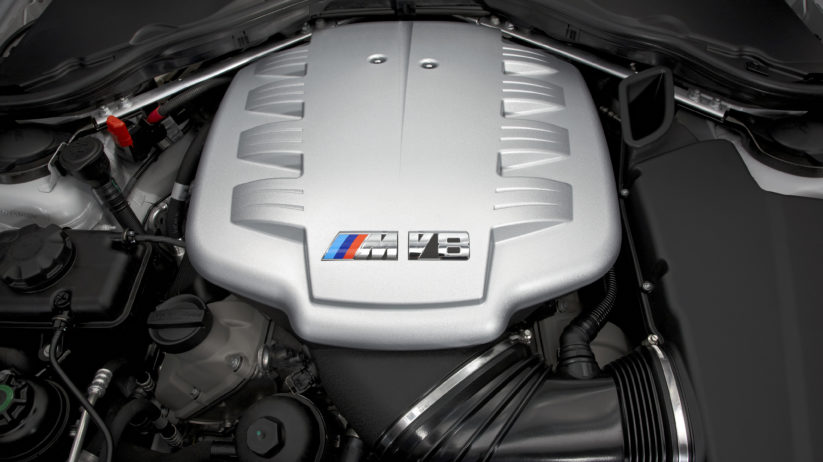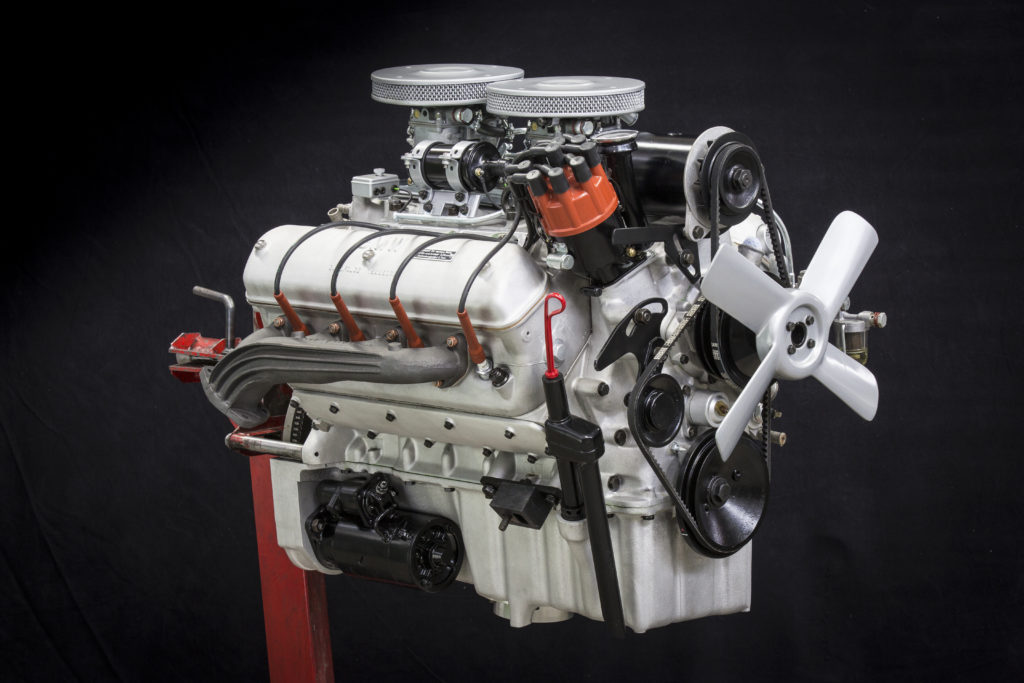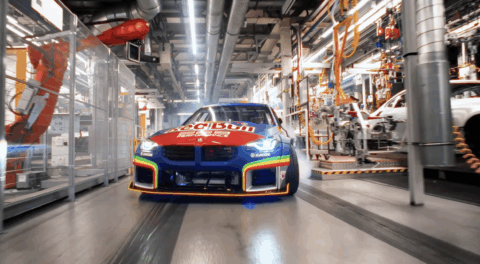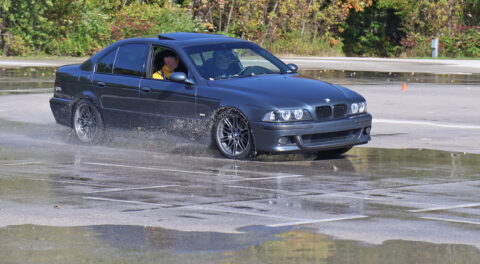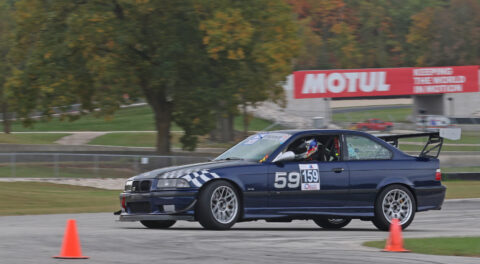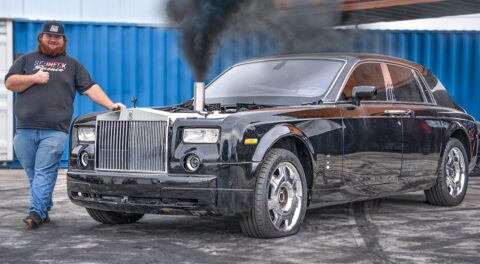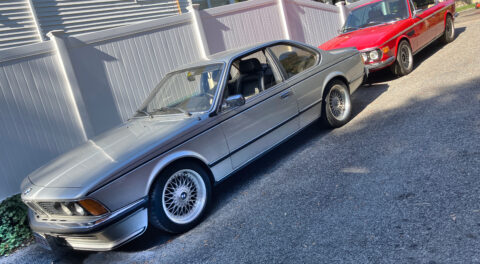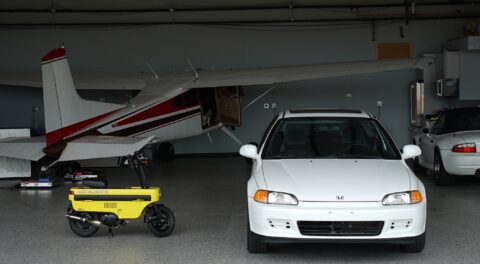The V8 is an interesting engine for BMW. It hasn’t always been part of the lineup, and in the past, often stood in the shadow of more attainable four- and six-cylinder designs. Nonetheless, a period lasting from roughly 1998 until 2013 saw two of the best units from any automaker come from BMW’s M division, while more recently, the current turbocharged design continues to be pushed to new levels of awe-inspiring performance.
Although BMW has continuously offered a V8 engine since the early 1990’s, starting with the M60, for roughly 30 years prior, power for the entire model lineup was supplied by just a handful of underlying four- and six-cylinder designs. A lot has changed since the days of the M60, and today, BMW’s current V8 design is the motivational force behind the brand’s fastest and most powerful offerings, like the M5 and M8. Many underlying core elements have stayed the same though, and it’s interesting to juxtapose some of the time-tested similarities with the incredible capability of a modern design.
In addition to the venerable four- and six-cylinders, BMW’s M division has also applied its engineering expertise to the V8 architecture, and the resulting units are some of most impressive and captivating—even after technology has moved on, and a few decades have demonstrated a need for timely servicing and preventative maintenance. Check out the entire progression below.
BMW Overhead Valve V8 (1954–1965)
BMW’s V8 story begins with the pushrod design of the 1950s and 60’s. Said to use a layout that was heavily influenced by the Oldsmobile Rocket V8 and Cadillac designs which came about after WWII—two of the first commercially successful overhead valve engines—the all-aluminum unit was the main power plant for BMW’s offerings of the period. Significantly smaller in comparison to its American inspiration, as most European V8s have been since, BMW’s first unit is the only V8 by the company to use pushrod-actuated valves, and was produced from 1954 until 1965.
Known for its unique sound, and technologically advanced thanks to alloy construction that predated the Buick 215 by several years, experiencing BMW’s overhead valve V8 is a rare treat, especially considering the cars in which it was used. During this period, which was before BMW reoriented itself by selling smaller, affordable models such as the 700 and New Class, the focus was on large, body-on-frame luxury platforms, along with specialties like the 507 or 3200CS, both of which use BMW’s OHV V8.
There are various different versions of BMW’s overhead valve V8, including the initial 2.6-liter displacement and the more potent 3.2-liter, and within these exist variations that were concerned with carburetors and compression, and the different output they netted. The 2.6-liter is nearly square when it comes to bore and stroke, while the increased displacement of the 3.2-liter was achieved by widening the bores, a change that created an oversquare design with more willingness to rev. On the bottom end of the spectrum is the M502/1, which powered models such as the 502, 501 V8, and 2.6. This design was equipped with a single Solex 30 PAAJ carburetor, and developed somewhere between 95 and 100 horsepower at 4,800 rpm, with 136 lb. ft. of torque peaking low in the rev range at 2,500. On the other end is the M507/1, which was destined for the 507 roadster. Outfitted with an aggressive camshaft, polished combustion chambers, and a pair of Zenith 32 NDIX carbs, this version developed 150 horsepower at 5,000 rpm, with 177 lb. ft. of torque at 4,000.
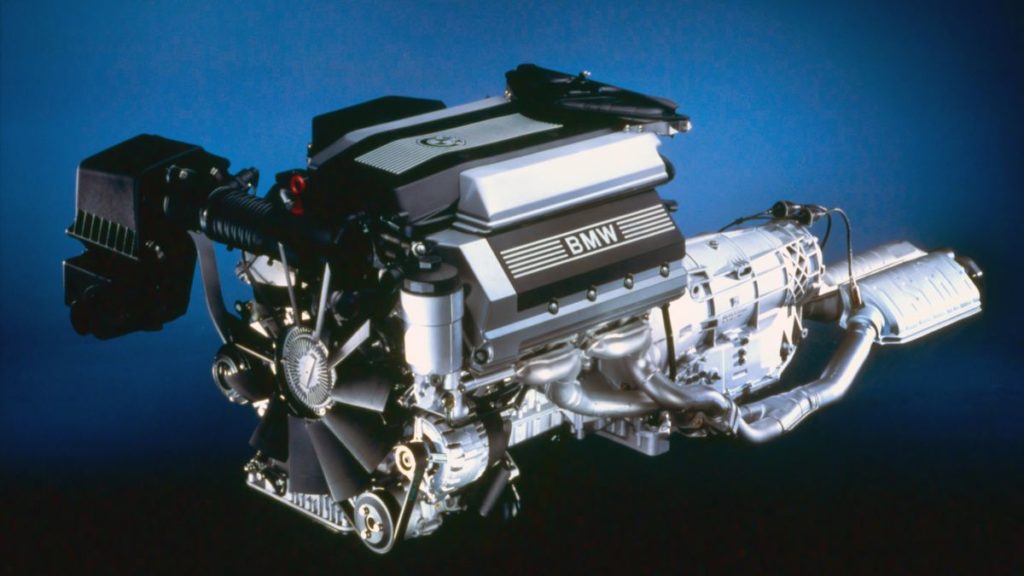
M60 (1992–1996)
Following a 27 year hiatus, from 1965 until 1992, BMW introduced its second V8 passenger car engine. Brought to market at a time when a few holdout models could still be had with the M30 six, the M60 was technologically advanced for its era, and brought smooth-running power to the lineup. In comparison with the OHV design, the M60 is a completely different animal, packing features like four-valve heads, quad overhead camshafts, and coil-on-plug ignition. The dual-row timing chain is and associated mechanism is self-adjusting, and the aluminum block and heads are topped by magnesium valve covers.
Like the OHV design of yesteryear, which was used exclusively in expensive, luxurious models—the only cars BMW was building at the time—the M60 was also reserved for higher-priced offerings, although these models were now part of a much larger lineup. Introduced to the market beneath the hood of the E32 740i and perhaps more importantly the E34 540i, the M60 was powerful and high-revving, and very quickly become something people lusted after.
The M60 came in two versions; the 3.0-liter M60B30, and the more popular 3.0-liter M60B40. Beyond smaller bores, the B30 also had a shorter piston stroke, which helped to retain the oversquare layout. Remembered for having the power of a six-cylinder but with the fuel economy of a V8, the B30 was advertised as having 215 horsepower at 5,800 rpm and 214 pound-feet of torque at 4,500. The M60B40 was also oversquare, and can be revved well beyond the factory 6,500 rpm limit. Increasing displacement made for a more respectable amount of grunt, more specifically 282 horsepower at 5,800 rpm and 295 pound-feet at 4,500.
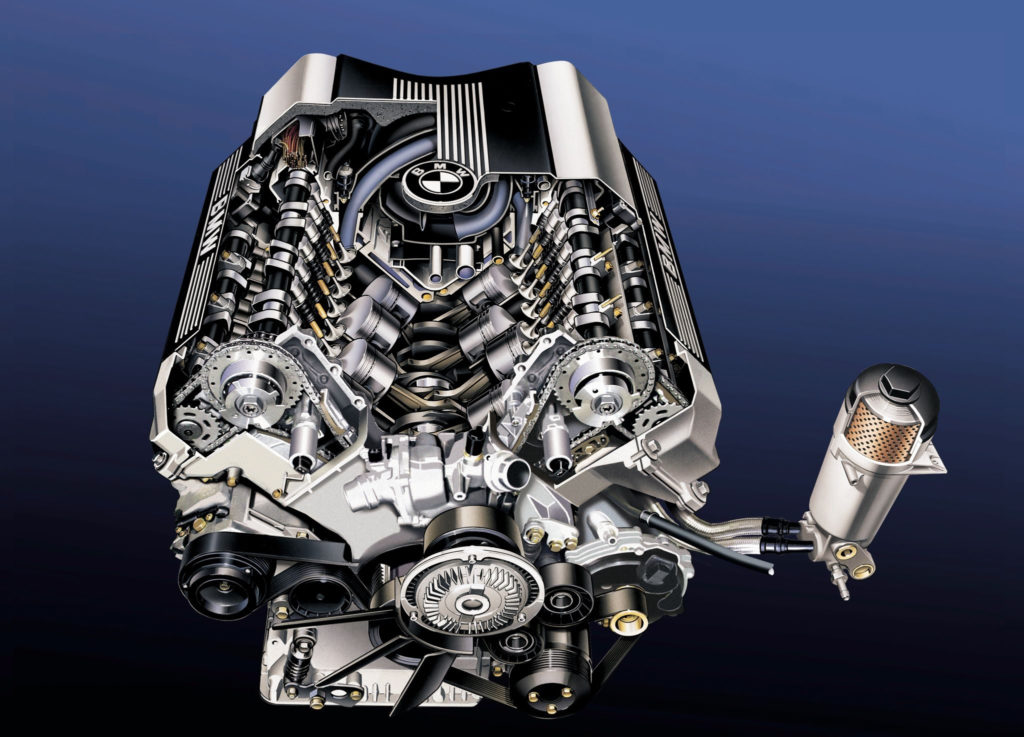
M62 (1995–2005)
The M62 is where things begin to get complicated, thanks to four different displacement levels, three of which were given technical updates partway through production. BMW’s third passenger-car V8 is also one of the most interesting, with two versions developed by Alpina, a host of upgrades that brought the design into the modern era, and, of course, the M derivative that it spawned. Primarily intended for use in the Five and 7 Series, the M62 hit the market in 1996, and established itself as a powerhouse beneath the hood of the 540i. In fact, it has been speculated that the 282 horsepower and 310 pound-feet of torque were considered more than adequate, and it wasn’t until later that competition from AMG prompted development of the M5.
The M62 came in 3.5-, 4.4-, 4.6- and 4.8-liter displacements, every one of which is oversquare. The 4.4-liter version is far and away the most popular, thanks to its use in models such as the E39 540i, E38 740i, and E53 X5. When VANOS was added to the intake camshafts in 1998 for the technical update, horsepower remained the same at 282, but peaked 300 rpm earlier in the rev band, at 5,400 instead of 5,700. Torque improved from 310 to 325 pound-feet, and also peaked 300 rpm lower, at 3,600.
Alpina was behind the 4.6- and 4.8-liter displacements, the first of which is actually designated F3 by the Buchloe-based manufacturer. Somewhat unknown, the M62B46 was only used to power the Alpina B10 V8, while the M62TUB46 (the updated version with VANOS) found its way into the X5 4.6is where it gained a following. The updated 4.6-liter develops 342 horsepower at 5,700 rpm, and 354 pound-feet at 3,700, while redline arrives at 6,500. The penultimate version of the M62 is the B48, a unit developed specifically by Alpina for use in their B10 V8S, and perhaps more importantly, the Alpina Roadster V8 (their version of the Z8). Not to be confused with the N62B48 which would later be used in the X5 4.8is, the M62B48 belts out 370 horsepower at 6,000 rpm with 376 pound-feet of torque arriving at 3,700.
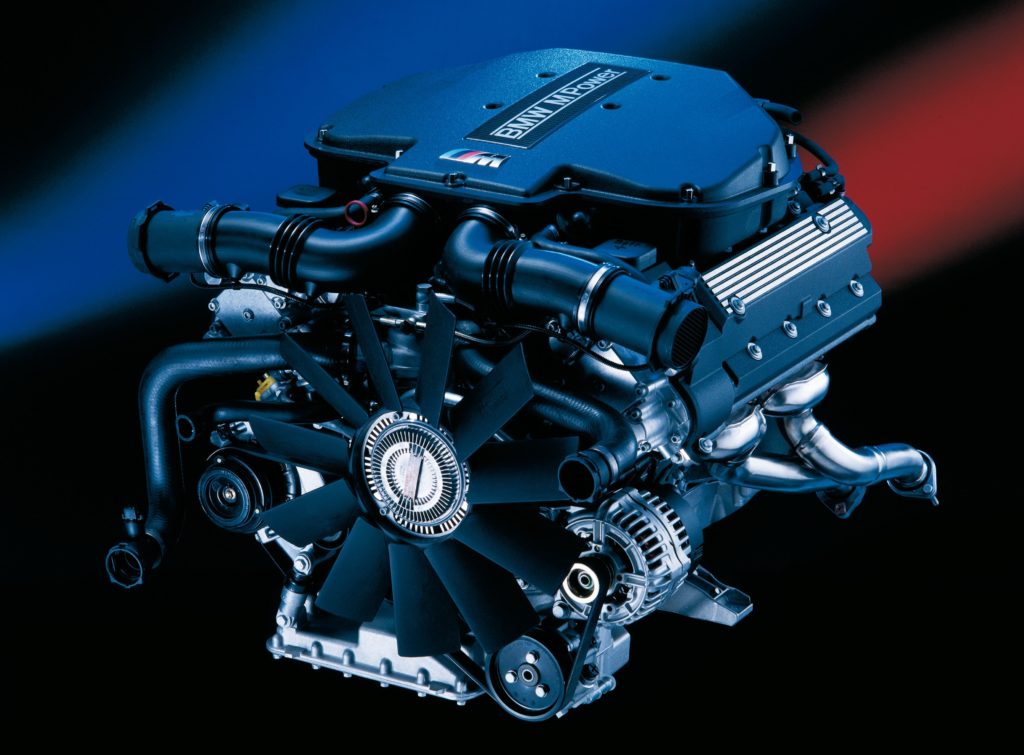
S62B50 (1998–2003)
The M62 is also a standout on this list because it is the only standard series production BMW V8 that spawned an independently developed M version of a higher displacement. The S62B50 is remembered as one of the all-time greats in the BMW engine lineup, not only because of its use in incredible models like the M5 and Z8—which happen to have remarkably varied personalities and driving experiences—but because of its characteristic instantaneous power delivery. This power delivery was made possible by way of cutting-edge technology and old-fashioned hot-rodding techniques.
Quad overhead camshafts can be phased for optimal output by double VANOS, a technology previously found only on the S50B32 Euro and the S70/2 V12 of the McLaren F1, while there are also two additional oil scavenge pumps which activate during dynamic driving. On the other hand, enlarged displacement was made possible through the use of larger bores than any M62 design, and individual throttle bodies—albeit with electronic controls—allow the unit to scream at full-tilt.
Gearing and a different exhaust mean the S62 in the Z8 is quite varied, but putting down the power with the top stowed is memorable for another set of reasons, one being a likeness to the sound profile of the 507 and other period V8 sports cars.
Beyond its use in production models, the S62 also found success in motorsport. Daytona prototypes, built by the likes of Dinan, relied on S62 architecture, while Turner Motorsport also used the engines in their E92 M3 race cars before switching to the S65. Speaking of Daytona prototypes, the October 2007 issue of Roundel featured a special Z8 nicknamed Odin’s Warhorse, which was powered by one of the Dinan-built S62 Daytona engines.
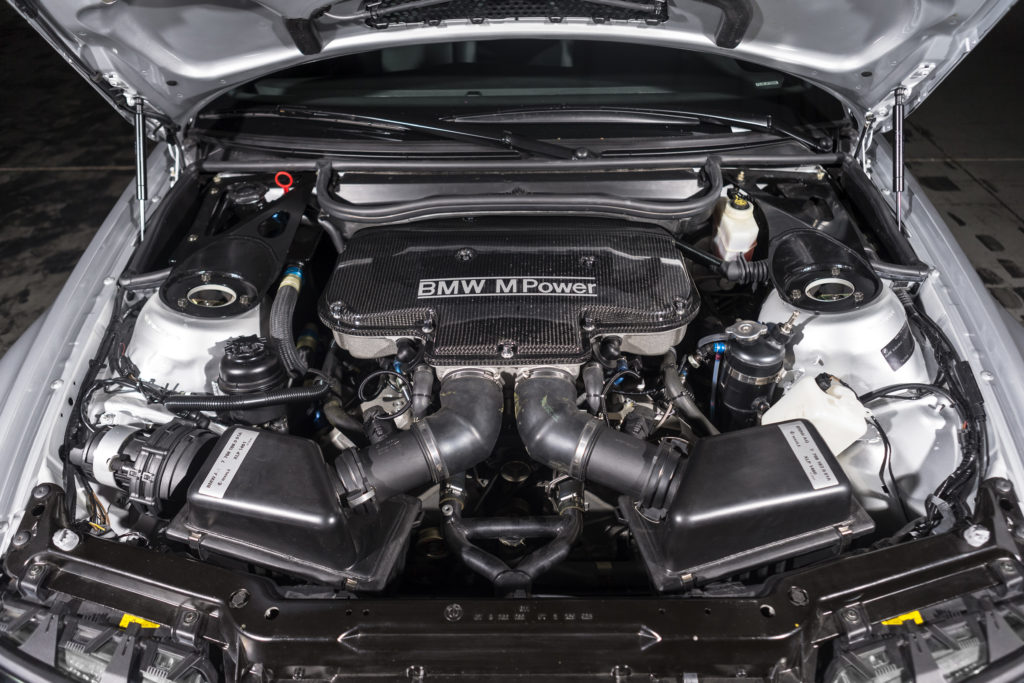
P60B40 (2001–2005)
The P60B40 never found its way into any volume series production BMW models, but fans of the the automaker’s racing efforts will remember the E46 M3 GTR winning the 2001 ALMS GT class. The following year, ALMS GT homologation rules were changed, stating that a minimum of 100 road cars and 1,000 engines had to be produced, a substantially more expensive proposition than the six road-going E46 M3 GTRs that BMW had produced, three of which were actually prototypes.
The specifics of the P60 are tough to nail down with any certainty, but we do know it is like every other BMW V8 on this page except for the original, in that it uses a quad-cam layout with a total of 32 valves. Typically hidden behind carbon fiber shrouds, the unit boasted a weight savings over the S54 it took the place of, and uses a dry-sump lubrication system along with a flat-plane crankshaft. The version used for the race car develops 444 horsepower at 7,500 rpm, while the road-going type was detuned to 380 horsepower at 7,000.
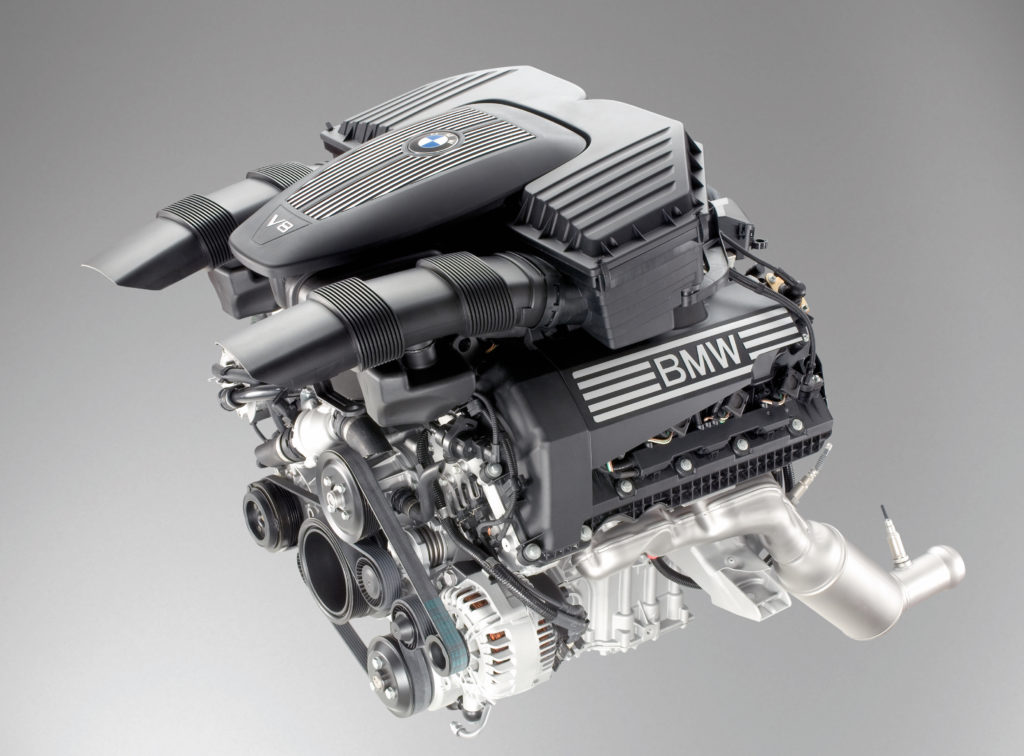
N62 (2002–2010)
The N62 is an integral stepping stone along the development timeline of the BMW V8. Continuing the trend of technological innovation established by the lineup, and more specifically the previous M62, the N62 came with new features like double VANOS, a variable-length intake manifold (DISA), and Valvetronic. Produced for the bulk of the early 2000’s across a period of eight years, it wasn’t given any sort of technical update, but as part of the LCI for some of the models that used it, the 4.4-liter version was replaced with a 4.8-liter design that is not to be confused with the Alpina version of the M62 which has a slightly greater displacement.
The full range of displacements goes from 3.6 to 4.8 liters, and every variant is oversquare with a bore that is larger than the piston stroke. Power varies significantly among them, but the N62B44, the first version offered for the U.S. market, came with 329 horsepower at 6,100 rpm with 332 pound-feet of torque at 3,600, except for those intended for the X5 which were rated slightly lower. The late-model E53 X5 gained the 4.8-liter in 2004 with the 4.8is model trim, and in the following years, the 5 Series and 7 Series lineups would be upgraded to use a slightly more powerful version. In its most potent form, the N62B48 develops 362 horsepower at 6,300 rpm with 321 pound-feet of torque peaking at 3,400 rpm—a bit less than the Alpina M62TUB48
Alpina also modified the N62B44 with a supercharger and supporting internal upgrades like Mahle pistons, a forged crankshaft, and a block made specifically for the application. Referred to as the H1, there are actually two versions of this N62, which is the most powerful of the lineup. The type most likely to be encountered in the U.S. will be found under the hood of a late-model E65 Alpina B7, and puts down 394 horsepower at 5,500 rpm with 516 pound-feet of torque at 3,500. The penultimate version, which was never sold here, makes 523 horsepower and 535 pound-feet of torque, revealing the incredible potential of the N62 engine.
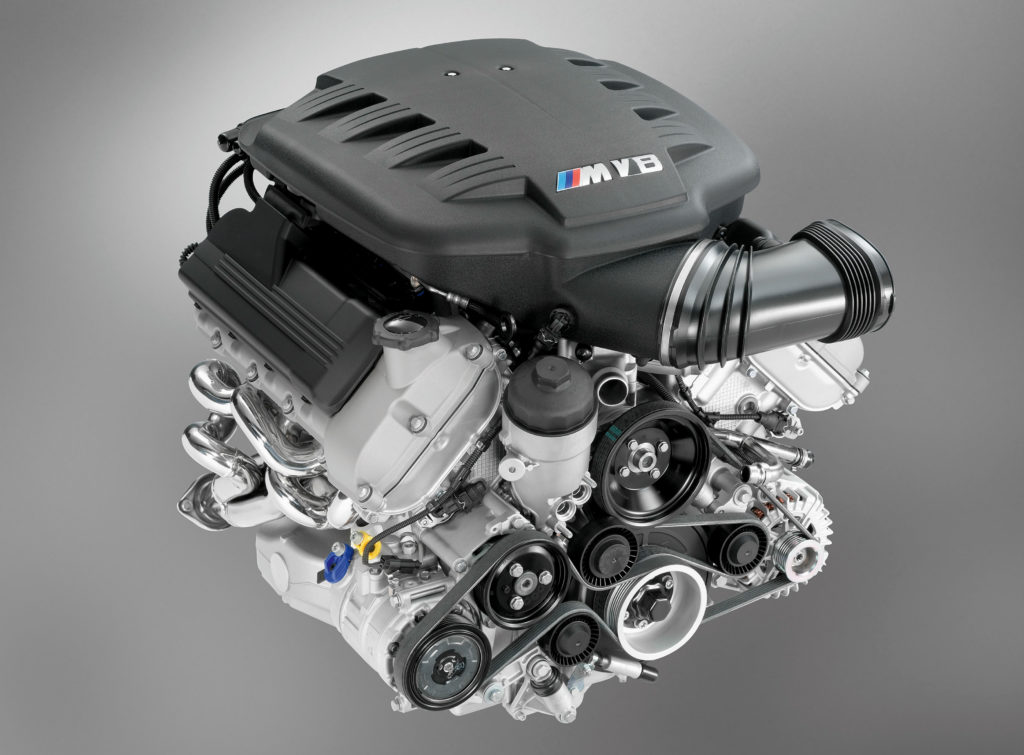
S65 (2007–2013)
Likely to be among the favorites on this list, the S65 is actually a standalone M design with no series production counterpart upon which it was based. In fact, the S65 uses a design basis that is derived from the S85 V10 engine that saw use in the E60 M5 and contemporary E63 M6, another M engine with no volume production stablemate. The S65 (and S85) are two of the most incredible engines BMW has ever produced, and along with the S54 and S62, these four engines represent what is now viewed as the pinnacle of naturally aspirated BMW engineering. Today, the torque rating of the S65, even in its most potent form, stands as a stark comparison to the twist generated by modern units with direct injection and turbocharging, but what the V8 lacks in grunt, it makes up for with a stratospherically high redline and unforgettable character.
The S65 V8 can rev to 8,400 rpm, 150 more than the S85. Like the V10, it relies on ionic current measuring for knock sensing instead of dedicated sensors, a process that is achieved by passing a low voltage signal across the spark plugs immediately after ignition spark to detect combustion chamber conditions. It also uses a pair of electronically operated scavenging pumps to prevent oil starvation during cornering, and all of the technology we had come to expect from BMW at the time, like double VANOS. The firing order is also different than most other V8 designs, and all other BMW V8s, and thanks to the use of aluminum over the cast iron of the S54, the S65 weighs less than the six-cylinder it succeeded.
Two version of the S65 were made, a four-liter displacement version that was used for the conventional M3 lineup, and a 4.4-liter which was used exclusively in the E92 M3 GTS and E90 M3 CRT models. Both variants are oversquare, and the S65B40 makes 414 horsepower at 8,300 rpm with 295 pound-feet of torque at 3,900. The larger displacement of the S65B44 was achieved by the use of a longer stroke, and the resulting output increase yielded 444 horsepower at 8,300 rpm and 325 pound-feet of torque at 3,750. Supporting factory equipment for the S65B44 includes a lightweight titanium exhaust.
Viewed by some as a spiritual successor to the S62, the S65 also found success in motorsport. A racing version of the S65 was developed by BMW, and is referred to as the P65B44. This engine saw use in the E92 M3 GTR race car, and perhaps more memorably in the Z4 GT3 and GTE.
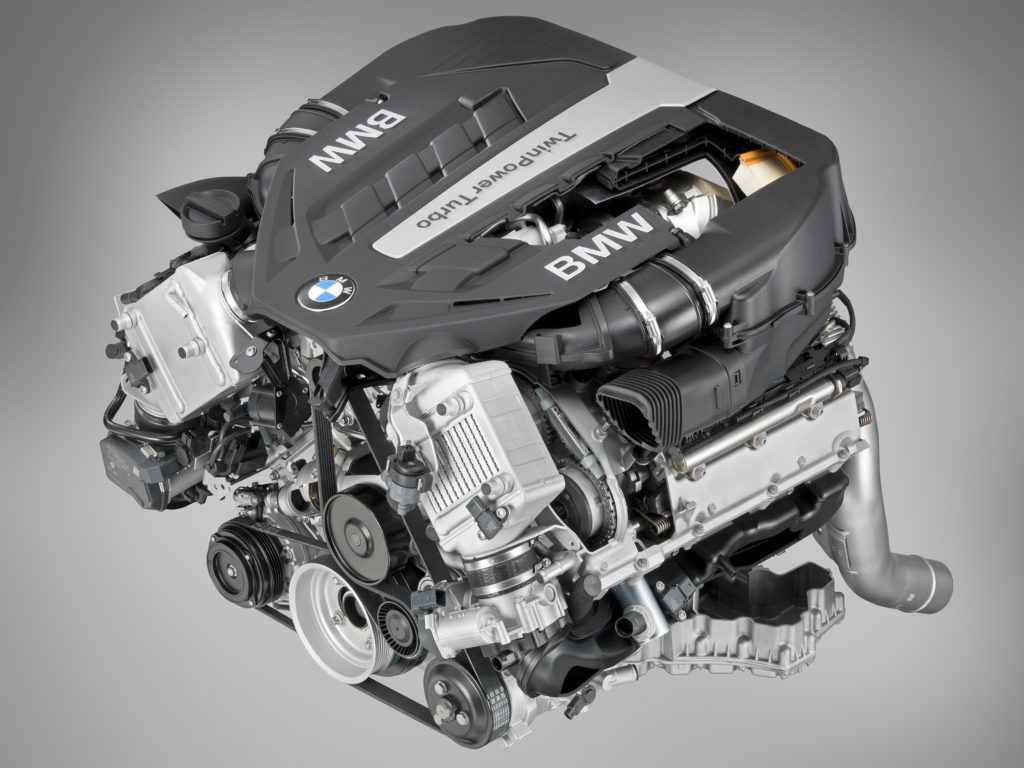
N63 and S63 (2008–Present)
The current era of the BMW V8 begins over a decade ago in 2008, with the introduction of the N63. Nothing short of game-changing thanks to its hot-vee layout which puts the turbochargers between the cylinder banks, reversed from how V8 engines have been for generations, the N63 also came with direct injection, and has set the tone for how other manufacturers approach the architecture. Since the N63 hit the market, both Mercedes-AMG and Audi have followed up with their own four-liter hot-vee designs, which seem to have taken at least some heed from BMW.
In continuous production for over ten years now, the N63 has been updated no less than three times, gaining more power, torque, and efficiency with each iteration. The forward march of technology hasn’t paused in the time that the N63 has been available, and BMW hasn’t stopped adding new features, like Valvetronic, and now ultra high-pressure precision fuel injection of over 5,000 PSI to the mix.
The M derivative S63 appeared two years after the N63, in 2010, and has also seen similar perpetual upgrading as time has passed. Power has increased as well, with the latest versions a healthy margin above where things were when these engines first arrived. Alpina has also spent significant time modifying the N63 to their liking, producing somewhere between five or six separate versions over the years, the most potent of which are a strong challenge for the contemporary S63.
With the exception of a four-liter China-exclusive variant, all N63 and S63 engines use a 4.4-liter displacement, with a bore and stroke that are nearly square. The very first N63, the N63B44O0, arrived in 2008, and offered 402 horsepower from 5,500 to 6,400 rpm with 443 pound-feet of torque from 1,750 to 4,500. The latest version of the N63, the N63B44T3, makes 523 horsepower from 5,500 to 6,000 rpm, and 553 pound-feet from 1,800 to 4,600. The S63 has followed a similar path, debuting in 2010 under the hoods of the X5 and X6 M as the S63B44O0 with 547 horsepower at 6,000 rpm and 502 pound-feet from 1,500 to 5,650. The most current version, which powers cars such as the M8 Competition and M5 Competition, can put down at least 617 horsepower at 6,000 rpm with 553 pound-feet of torque on tap from 1,800 to 5,860.
There’s simply too much information to go over relating to the nuances of the various N63 and S63 variants that have been made over the years for this article, but you can find a deep dive on all of the specifics in a focus piece we did on the engines last summer.
The Future
Where exactly BMW is heading with the V8 is anyone’s guess at this point, but we still have some speculation for what might happen over the next few model generations. With the exception of the V12, BMW’s mainstay inline-six and four-cylinder engines have all switched to using modular construction with shared componentry, and if BMW is to keep the V8 around, it will likely follow suit. This would mean stronger blocks, and cylinder head components that could be produced using BMW’s additive manufacturing (3D printing) process. Or, if things shake out the way more than a few automakers—including BMW—have anticipated they will, with electrification coming to the forefront, the N63 could be the last V8 BMW makes. If this is the case, it will likely see a few more incremental updates over the next several years, before signing off ahead of an era where the internal combustion engine is a remnant of bygone era. We hope the latter isn’t the case, and would love to see how powerful a BMW V8 with modular construction could be.—Alex Tock
[Photos courtesy BMW AG.]

